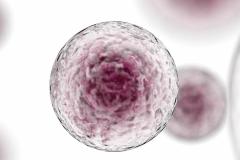- Overview
-
My research program aims to better understand how the immune system can be used to treat childhood diseases. In children with cancer, the immune system is no longer able to rid the body of cancerous cells. In children with autoimmune diseases the immune system gets rid of healthy cells of the body. We are particularly interested in the metabolism of immune cells. Metabolism consists of all the chemical processes that occur within a living organism that maintain life. In immune cells, this means that building blocks (metabolites) need to be brought in to allow the duplication of a cell by making all crucial parts of new cells. In fast growing immune cells this is especially demanding, since they need to duplicate themselves very rapidly to protect against attacks on the normal function of our bodies by, for instance, infections or cancer. This requires a variety of building blocks, and a lot of energy. For this process, cells can acquire these building blocks from their environment, or make them via intricate biochemical pathways. When the right building blocks are not available, immune cells fail to increase in numbers and cannot perform their job.
We use biochemical and metabolomic techniques to understand what fuel is needed for immune cell function, and how immune cells sense the fuel that is available in their environment.
By closely collaborating with Clinicians and Clinician scientists at BCCHR we are aiming to apply the findings to design better treatments for children with immune related diseases.
- Publications
-
Metformin in necrobiotic xanthogranuloma
British Journal of Dermatology
Henning Klapproth and Manuel Huerta Arana and Jan W Lackmann and Luisa Bopp and Muhammad S Hussain and Ahlem Aloui and Kerstin Becker and Esther von Stebut and Ramon I Klein Geltink and Iliana Tantcheva-Poór and Mario Fabri
DOI: 10.1093/bjd/ljaf370
09/2025Assessment of protein synthesis rate enables metabolic profiling of resident-immune cells of the islets of Langerhans
Frontiers in Immunology
de Brito Monteiro, L. and Archambault, A.-S. and Soukhatcheva, G. and Dai, D. and Velghe, J. and Chen, Y.-C. and Verchere, C.B. and Klein Geltink, R.I.
DOI: 10.3389/fimmu.2025.1662986
2025Molecular subtyping of endometrial carcinoma cell lines uncovers subtype-specific targetable vulnerabilities
Npj Precision Oncology
Li, E.S. and Ho, R. and Tao, R. and Choi, Y.W.Y. and Shin, C.Y. and Chen, S.Y. and Gokbayrak, B. and Senz, J. and Yao, B. and Johnston, L. and Martin, S.D. and Yang, E. and Carey, M.S. and Hennessy, B.T. and Huntsman, D.G. and Klein Geltink, R.I. and Hoang, L. and Wang, Y.
DOI: 10.1038/s41698-025-01053-x
2025Lactic acid improves Treg manufacturing and in vivo function
Molecular Therapy Methods and Clinical Development
Tuomela, K. and Leong, E.S.Y. and Haque, M. and Mangat, S. and Fung, V.C.W. and Garcia, R.V. and Archambault, A.-S. and Boardman, D.A. and Klein Geltink, R.I. and Mojibian, M. and Levings, M.K.
DOI: 10.1016/j.omtm.2025.101600
2025A multi-kingdom genetic barcoding system for precise clone isolation
Nature Biotechnology
Ishiguro, S. and Ishida, K. and Sakata, R.C. and Ichiraku, M. and Takimoto, R. and Yogo, R. and Kijima, Y. and Mori, H. and Tanaka, M. and King, S. and Tarumoto, S. and Tsujimura, T. and Bashth, O. and Masuyama, N. and Adel, A. and Toyoshima, H. and Seki, M. and Oh, J.H. and Archambault, A.-S. and Nishida, K. and Kondo, A. and Kuhara, S. and Aburatani, H. and Klein Geltink, R.I. and Yamamoto, T. and Shakiba, N. and Takashima, Y. and Yachie, N.
DOI: 10.1038/s41587-025-02649-1
2025Inhibition of xanthine oxidoreductase with febuxostat, but not allopurinol, prevents inflammasome assembly and IL-1ß release
Life Science Alliance
Monteiro, L.B. and Archambault, A.-S. and Starchuk, L.F. and Alcazar, A. and Oh, J.H. and Dubland, J.A. and Raki?, B. and Patterson, A.E. and Verchere, C.B. and Geltink, R.I.K.
DOI: 10.26508/lsa.202403191
2025The unique metabolome of clear cell ovarian carcinoma
Journal of Pathology
Ji, J.X. and Hoang, L.N. and Cochrane, D.R. and Lum, A. and Senz, J. and Farnell, D. and Tessier-Cloutier, B. and Huntsman, D.G. and Klein Geltink, R.I.
DOI: 10.1002/path.6329
2024Glutamine promotes human CD8+ T cells and counteracts imiquimod-induced T cell hyporesponsiveness
Iscience
Bopp, L. and Martinez, M.L. and Schumacher, C. and Seitz, R. and Arana, M.H. and Klapproth, H. and Lukas, D. and Oh, J.H. and Neumayer, D. and Lackmann, J.W. and Mueller, S. and von Stebut, E. and Brachvogel, B. and Brodesser, S. and Klein Geltink, R.I. and Fabri, M.
DOI: 10.1016/j.isci.2024.109767
2024Expansion and characterization of immune suppressive CD56(bright)Perforin(-) regulatory-like natural killer cells in chronic graft-versus-host disease
Cytotherapy
Lauener, M.P. and Tanaka, E. and Mei, A. and Abdossamadi, S. and Ostroumov, E. and Geltink, R.I.K. and Malarkannan, S. and Schultz, K.R.
DOI: 10.1016/j.jcyt.2024.07.013
2024DDIT4L regulates mitochondrial and innate immune activities in early life
JCI Insight
Michalski, C. and Cheung, C. and Oh, J.H. and Ackermann, E. and Popescu, C.R. and Archambault, A.-S. and Prusinkiewicz, M.A. and Da Silva, R. and Majdoubi, A. and Paramo, M.V. and Xu, R.Y. and Reicherz, F. and Patterson, A.E. and Golding, L. and Sharma, A.A. and Lim, C.J. and Orban, P.C. and Klein Geltink, R.I. and Lavoie, P.M.
DOI: 10.1172/jci.insight.172312
2024Phosphoinositide acyl chain saturation drives CD8+ effector T cell signaling and function
Nature Immunology
Joy Edwards-Hicks and Petya Apostolova and Joerg M. Buescher and Hannes Maib and Michal A. Stanczak and Mauro Corrado and Ramon I. Klein Geltink and Maria Elena Maccari and Matteo Villa and Gustavo E. Carrizo and David E. Sanin and Francesc Baixauli and Beth Kelly and Jonathan D. Curtis and Fabian Haessler and Annette Patterson and Cameron S. Field and George Caputa and Ryan L. Kyle and Melanie Soballa and Minsun Cha and Harry Paul and Jacob Martin and Katarzyna M. Grzes and Lea Flachsmann and Michael Mitterer and Liang Zhao and Frances Winkler and David Ali Rafei-Shamsabadi and Frank Meiss and Bertram Bengsch and Robert Zeiser and Daniel J. Puleston and David O’Sullivan and Edward J. Pearce and Erika L. Pearce
DOI: 10.1038/s41590-023-01419-y
03/2023CD8+ T cells pass the acid test
Nature Metabolism
Ju Hee Oh and Anne-Sophie Archambault and Ramon I. Klein Geltink
DOI: 10.1038/s42255-023-00738-6
01/2023Molecular and metabolomic characterization of hiPSC-derived cardiac fibroblasts transitioning to myofibroblasts
bioRxiv
Nagalingam, R.S. and Jayousi, F. and Hamledari, H. and Baygi, D.H. and Dababneh, S. and Lindsay, C. and Geltink, R.K. and Lange, P.F. and Dixon, I.M.C. and Rose, R.A. and Czubryt, M.P. and Tibbits, G.F.
DOI: 10.1101/2023.10.08.561455
2023Tree-structured topic modelling of single-cell gene expression data uncovers hierarchical relationships between immune cell types
bioRxiv
Ye, P.E. and Zhang, Y. and Klein Geltink, R.I. and Park, Y.P.
DOI: 10.1101/2023.11.06.565879
2023Title: Inducing an oxidized redox-balance improves anti-tumor CD8+ T cell function
Biorxiv
Oh, J.H. and Cederberg, R.A. and Tanaka, E. and Bopp, L. and Ser, T. and Niyyati, S. and Patterson, A.E. and Amanat, N. and Dutra, J. and Ye, P. and Clark, M. and Ward-Hartstonge, K. and Archambault, A.-S. and Tsui, J. and Lange, P.F. and Tsai, S. and Bruce Verchere, C. and Park, Y. and Fabri, M. and Bennewith, K.L. and Klein Geltink, R.I.
DOI: 10.1101/2023.03.27.533229
2023Alanine supplementation exploits glutamine dependency induced by SMARCA4/2-loss
Nature Communications
Zhu, X. and Fu, Z. and Chen, S.Y. and Ong, D. and Aceto, G. and Ho, R. and Steinberger, J. and Monast, A. and Pilon, V. and Li, E. and Ta, M. and Ching, K. and Adams, B.N. and Negri, G.L. and Choiniere, L. and Fu, L. and Pavlakis, K. and Pirrotte, P. and Avizonis, D.Z. and Trent, J. and Weissman, B.E. and Klein Geltink, R.I. and Morin, G.B. and Park, M. and Huntsman, D.G. and Foulkes, W.D. and Wang, Y. and Huang, S.
DOI: 10.1038/s41467-023-38594-3
2023Deletion of Carboxypeptidase E in b-Cells Disrupts Proinsulin Processing but Does Not Lead to Spontaneous Development of Diabetes in Mice
Diabetes
Chen, Y.-C. and Taylor, A.J. and Fulcher, J.M. and Swensen, A.C. and Dai, X.-Q. and Komba, M. and Wrightson, K.L.C. and Fok, K. and Patterson, A.E. and Geltink, R.I.K. and Macdonald, P.E. and Qian, W.-J. and Verchere, C.B.
DOI: 10.2337/db22-0945
2023A multi-kingdom genetic barcoding system for precise target clone isolation
bioRxiv
Ishiguro, S. and Ishida, K. and Sakata, R.C. and Mori, H. and Takana, M. and King, S. and Bashth, O. and Ichiraku, M. and Masuyama, N. and Takimoto, R. and Kijima, Y. and Adel, A. and Toyoshima, H. and Seki, M. and Oh, J.H. and Archambault, A.-S. and Nishida, K. and Kondo, A. and Kuhara, S. and Aburatani, H. and Klein Geltink, R.I. and Takashima, Y. and Shakiba, N. and Yachie, N.
DOI: 10.1101/2023.01.18.524633
2023Consequences of adjusting cell density and feed frequency on serum-free expansion of thymic regulatory T cells
Cytotherapy
Katherine N. MacDonald and Michael G. Hall and Sabine Ivison and Sanjiv Gandhi and Ramon I. Klein Geltink and James M. Piret and Megan K. Levings
DOI: 10.1016/j.jcyt.2022.06.006
11/2022Deletion of carboxypeptidase E in beta cells disrupts proinsulin processing and alters beta cell identity in mice
Yi-Chun Chen and Austin J. Taylor and James M. Fulcher and Adam C. Swensen and Xiao-Qing Dai and Mitsuhiro Komba and Kenzie L.C. Wrightson and Kenny Fok and Annette E. Patterson and Ramon I. Klein-Geltink and Patrick E. MacDonald and Wei-Jun Qian and C. Bruce Verchere
DOI: 10.1101/2022.10.20.512925
10/2022PTEN is required for human Treg suppression of costimulation in vitro
European Journal of Immunology
Avery J. Lam and Manjurul Haque and Kirsten A. Ward-Hartstonge and Prakruti Uday and Christine M. Wardell and Jana K. Gillies and Madeleine Speck and Majid Mojibian and Ramon I. Klein Geltink and Megan K. Levings
DOI: 10.1002/eji.202249888
09/2022PTEN is required for human Treg suppression of costimulation
Avery J. Lam and Manjurul Haque and Kirsten A. Ward-Hartstonge and Prakruti Uday and Christine M. Wardell and Jana K. Gillies and Madeleine Speck and Majid Mojibian and Ramon I. Klein Geltink and Megan K. Levings
DOI: 10.1101/2022.03.06.483188
03/2022A low-sugar diet enhancesDrosophilabody size in males and females via sex-specific mechanisms
Development
Jason W. Millington and Puja Biswas and Charlotte Chao and Yi Han Xia and Lianna W. Wat and George P. Brownrigg and Ziwei Sun and Paige J. Basner-Collins and Ramon I. Klein Geltink and Elizabeth J. Rideout
DOI: 10.1242/dev.200491
03/2022Metabolomic identification of a-ketoglutaric acid elevation in pediatric chronic graft-versus-host disease
Blood
Subburaj, D. and Ng, B. and Kariminia, A. and Abdossamadi, S. and Lauener, M. and Nemecek, E.R. and Rozmus, J. and Kharbanda, S. and Kitko, C.L. and Lewis, V.A. and Schechter-Finklestein, T. and Jacobsohn, D.A. and Harris, A.C. and Pulsipher, M.A. and Bittencourt, H. and Choi, S.W. and Caywood, E.H. and Kasow, K.A. and Bhatia, M. and Oshrine, B.R. and Coulter, D. and Chewning, J.H. and Joyce, M. and Pawlowska, A.B. and Megason, G.C. and Lawitschka, A. and Ostroumov, E. and Klein Geltink, R. and Cuvelier, G.D.E. and Schultz, K.R.
DOI: 10.1182/blood.2021013244
2022Using human induced pluripotent stem cell-derived cardiomyocytes to understand the mechanisms driving cardiomyocyte maturation
Frontiers in Cardiovascular Medicine
Hamledari, H. and Asghari, P. and Jayousi, F. and Aguirre, A. and Maaref, Y. and Barszczewski, T. and Ser, T. and Moore, E. and Wasserman, W. and Klein Geltink, R. and Teves, S. and Tibbits, G.F.
DOI: 10.3389/fcvm.2022.967659
2022Executive CoAching unleashes Tc22 anti-tumor capacity
Science immunology
Klein Geltink, R.I. and Pillai, A.
DOI: 10.1126/sciimmunol.abn9190
2022Transsulfuration, minor player or crucial for cysteine homeostasis in cancer
Trends in Cell Biology
Zhang, H.-F. and Klein Geltink, R.I. and Parker, S.J. and Sorensen, P.H.
DOI: 10.1016/j.tcb.2022.02.009
2022In macrophages fatty acid oxidation spares glutamate for use in diverse metabolic pathways required for alternative activation
bioRxiv
van Teijlingen Bakker, N. and Flachsman, L. and Carrizo, G.E. and Sanin, D.E. and Lawless, S. and Castoldi, A. and Monteiro, L. and Kabat, A.M. and Matsushita, M. and Haessler, F. and Patterson, A. and Geltink, R.K. and O?Sullivan, D. and Pearce, E.L. and Pearce, E.J.
DOI: 10.1101/2022.04.13.487890
2022Loss of FBXO11 function establishes a stem cell program in acute myeloid leukemia through dysregulation of the mitochondrial protease LONP1
bioRxiv
Mo, A.Y.-C. and Kincross, H. and Wang, X. and Chang, L.Y.-T. and Duns, G. and Kwan, H. and Lau, T. and Roderick Docking, T. and Tran, J. and Colborne, S. and Cheng, S.-W.G. and Huang, S. and Gharaee, N. and Willie, E. and Jiang, J. and Parker, J. and Bridgers, J. and Wood, D. and Geltink, R.K. and Morin, G.B. and Karsan, A.
DOI: 10.1101/2022.09.10.507366
2022Fever supports CD8 + effector T cell responses by promoting mitochondrial translation
Proceedings of the National Academy of Sciences
David O’Sullivan and Michal A. Stanczak and Matteo Villa and Franziska M. Uhl and Mauro Corrado and Ramon I. Klein Geltink and David E. Sanin and Petya Apostolova and Nisha Rana and Joy Edwards-Hicks and Katarzyna M. Grzes and Agnieszka M. Kabat and Ryan L. Kyle and Mario Fabri and Jonathan D. Curtis and Michael D. Buck and Annette E. Patterson and Annamaria Regina and Cameron S. Field and Francesc Baixauli and Daniel J. Puleston and Edward J. Pearce and Robert Zeiser and Erika L. Pearce
DOI: 10.1073/pnas.2023752118
06/2021Proteomic screens for suppressors of anoikis identify IL1RAP as a promising surface target in ewing sarcoma
Cancer Discovery
Zhang, H.-F. and Hughes, C.S. and Li, W. and He, J.-Z. and Surdez, D. and El-Naggar, A.M. and Cheng, H. and Prudova, A. and Delaidelli, A. and Negri, G.L. and Li, X. and ?rum-Madsen, M.S. and Lizardo, M.M. and Oo, H.Z. and Colborne, S. and Shyp, T. and Scopim-Ribeiro, R. and Hammond, C.A. and Dhez, A.-C. and Langman, S. and Lim, J.K.M. and Kung, S.H.Y. and Li, A. and Steino, A. and Daugaard, M. and Parker, S.J. and Geltink, R.I.K. and Orentas, R.J. and Xu, L.-Y. and Morin, G.B. and Delattre, O. and Dimitrov, D.S. and Sorensen, P.H.
DOI: 10.1158/2159-8290.CD-20-1690
2021Dynamic Cardiolipin Synthesis Is Required for CD8+ T Cell Immunity.
Cell metabolism
DOI: 10.1016/j.cmet.2020.11.003
PubMed: 33264603
12/2020EBF1 and Pax5 safeguard leukemic transformation by limiting IL-7 signaling, Myc expression, and folate metabolism.
Genes & development
Ramamoorthy S and Kometani K and Herman JS and Bayer M and Boller S and Edwards-Hicks J and Ramachandran H and Li R and Klein-Geltink R and Pearce EL and Grün D and Grosschedl R
DOI: 10.1101/gad.340216.120
PubMed: 33004416
10/2020IL-27 signalling regulates glycolysis in Th1 cells to limit immunopathology during infection.
PLoS pathogens
Montes de Oca M and de Labastida Rivera F and Winterford C and Frame TCM and Ng SS and Amante FH and Edwards CL and Bukali L and Wang Y and Uzonna JE and Kuns RD and Zhang P and Engwerda CR
DOI: 10.1371/journal.ppat.1008994
PubMed: 33049000
10/2020Triacylglycerol synthesis enhances macrophage inflammatory function.
Nature communications
Castoldi A and Monteiro LB and van Teijlingen Bakker N and Sanin DE and Rana N and Corrado M and Cameron AM and Hässler F and Matsushita M and Caputa G and Klein Geltink RI and Pearce EJ
DOI: 10.1038/s41467-020-17881-3
PubMed: 32796836
08/2020Metabolic conditioning of CD8+ effector T cells for adoptive cell therapy.
Nature metabolism
Klein Geltink RI and Edwards-Hicks J and Apostolova P and O'Sullivan D and Sanin DE and Patterson AE and Puleston DJ and Ligthart NAM and Buescher JM and Grzes KM and Kabat AM and Pearce EL
DOI: 10.1038/s42255-020-0256-z
PubMed: 32747793
08/2020Triacylglycerol synthesis enhances macrophage inflammatory function
Castoldi A and Monteiro LB and van Teijlingen Bakker N and Sanin DE and Rana N and Corrado M and Cameron AM and Hässler F and Matsushita M and Caputa G and Klein Geltink RI and Pearce EJ
DOI: 10.1101/2020.02.03.932079
02/2020The metabolic tug of war between HIV and T cells
Nature Metabolism
Ramon I. Klein Geltink
DOI: 10.1038/s42255-019-0091-2
07/2019The importance of methionine metabolism
eLife
Ramon I Klein Geltink and Erika L Pearce
DOI: 10.7554/elife.47221
05/2019Polyamines and eIF5A Hypusination Modulate Mitochondrial Respiration and Macrophage Activation.
Cell metabolism
Puleston DJ and Buck MD and Klein Geltink RI and Kyle RL and Caputa G and O'Sullivan D and Cameron AM and Castoldi A and Musa Y and Kabat AM and Zhang Y and Flachsmann LJ and Field CS and Pearce EL
DOI: 10.1016/j.cmet.2019.05.003
PubMed: 31130465
05/2019Acetate Promotes T Cell Effector Function during Glucose Restriction.
Cell reports
Qiu J and Villa M and Sanin DE and Buck MD and O'Sullivan D and Ching R and Matsushita M and Grzes KM and Winkler F and Chang CH and Curtis JD and Kyle RL and Van Teijlingen Bakker N and Pearce EL
DOI: 10.1016/j.celrep.2019.04.022
PubMed: 31091446
05/2019Establishment of a transgenic mouse to model ETV7 expressing human tumors
Transgenic Research
DOI: 10.1007/s11248-018-0104-z
02/2019Unraveling the Complex Interplay between T Cell Metabolism and Function
Annual Review of Immunology
Geltink, R.I.K. and Kyle, R.L. and Pearce, E.L.
DOI: 10.1146/annurev-immunol-042617-053019
2018Mitochondrial Membrane Potential Regulates Nuclear Gene Expression in Macrophages Exposed to Prostaglandin E2
Immunity
Sanin, D.E. and Matsushita, M. and Klein Geltink, R.I. and Grzes, K.M. and van Teijlingen Bakker, N. and Corrado, M. and Kabat, A.M. and Buck, M.D. and Qiu, J. and Lawless, S.J. and Cameron, A.M. and Villa, M. and Baixauli, F. and Patterson, A.E. and Hässler, F. and Curtis, J.D. and O'Neill, C.M. and O'Sullivan, D. and Wu, D. and Mittler, G. and Huang, S.C.-C. and Pearce, E.L. and Pearce, E.J.
DOI: 10.1016/j.immuni.2018.10.011
2018A metabolic interplay coordinated by HLX regulates myeloid differentiation and AML through partly overlapping pathways
Nature Communications
Piragyte, I. and Clapes, T. and Polyzou, A. and Klein Geltink, R.I. and Lefkopoulos, S. and Yin, N. and Cauchy, P. and Curtis, J.D. and Klaeylé, L. and Langa, X. and Beckmann, C.C.A. and Wlodarski, M.W. and Müller, P. and Van Essen, D. and Rambold, A. and Kapp, F.G. and Mione, M. and Buescher, J.M. and Pearce, E.L. and Polyzos, A. and Trompouki, E.
DOI: 10.1038/s41467-018-05311-4
2018ETV7 is an essential component of a rapamycin-insensitive mTOR complex in cancer
Science Advances
Harwood, F.C. and Klein Geltink, R.I. and O?Hara, B.P. and Cardone, M. and Janke, L. and Finkelstein, D. and Entin, I. and Paul, L. and Houghton, P.J. and Grosveld, G.C.
DOI: 10.1126/sciadv.aar3938
2018Caught in the cROSsfire: GSH Controls T Cell Metabolic Reprogramming
Immunity
Klein Geltink, R.I. and O'Sullivan, D. and Pearce, E.L.
DOI: 10.1016/j.immuni.2017.03.022
2017Mitochondrial Priming by CD28
Cell
Klein Geltink, R.I. and O'Sullivan, D. and Corrado, M. and Bremser, A. and Buck, M.D. and Buescher, J.M. and Firat, E. and Zhu, X. and Niedermann, G. and Caputa, G. and Kelly, B. and Warthorst, U. and Rensing-Ehl, A. and Kyle, R.L. and Vandersarren, L. and Curtis, J.D. and Patterson, A.E. and Lawless, S. and Grzes, K. and Qiu, J. and Sanin, D.E. and Kretz, O. and Huber, T.B. and Janssens, S. and Lambrecht, B.N. and Rambold, A.S. and Pearce, E.J. and Pearce, E.L.
DOI: 10.1016/j.cell.2017.08.018
2017Mitochondrial Dynamics Controls T Cell Fate through Metabolic Programming
Cell
Buck, M.D. and O'Sullivan, D. and Klein~Geltink, R.I. and Curtis, J.D. and Chang, C.-H. and Sanin, D.E. and Qiu, J. and Kretz, O. and Braas, D. and van~der~Windt, G.J.W. and Chen, Q. and Huang, S.C.-C. and O'Neill, C.M. and Edelson, B.T. and Pearce, E.J. and Sesaki, H. and Huber, T.B. and Rambold, A.S. and Pearce, E.L.
DOI: 10.1016/j.cell.2016.05.035
2016High MN1 expression increases the in vitro clonogenic activity of primary mouse B-cells
Leukemia Research
Numata, M. and Yener, M.D. and Ekmek?i, S.S. and Aydin, M. and Grosveld, G. and Cardone, M. and Terranova, S. and Geltink, R.K. and Özbek, U. and Öz?elik, E. and Güle?, T. and Anak, S. and Karaman, S. and Öztürk, G. and Akbiyik, M. and Kandilci, A.
DOI: 10.1016/j.leukres.2015.05.013
2015Zebrafish etv7 regulates red blood cell development through the cholesterol synthesis pathway
DMM Disease Models and Mechanisms
Quintana, A.M. and Picchione, F. and Geltink, R.I.K. and Taylor, M.R. and Grosveld, G.C.
DOI: 10.1242/dmm.015123
2014PAX3-FOXO1 induces up-regulation of Noxa sensitizing alveolar rhabdomyosarcoma cells to apoptosis
Neoplasia (United States)
Marshall, A.D. and Picchione, F. and Klein Geltink, R.I. and Grosveld, G.C.
DOI: 10.1593/neo.121888
2013MN1 overexpression is an important step in the development of inv(16) AML
Leukemia
Carella, C. and Bonten, J. and Sirma, S. and Kranenburg, T.A. and Terranova, S. and Klein-Geltink, R. and Shurtleff, S. and Downing, J.R. and Zwarthoff, E.C. and Liu, P.P. and Grosveld, G.C.
DOI: 10.1038/sj.leu.2404778
2007Genomic stability and functional activity may be lost in telomerase-transduced human CD8+ T lymphocytes
Blood
Schreurs, M.W.J. and Hermsen, M.A.J.A. and Geltink, R.I.K. and Scholten, K.B.J. and Brink, A.A.T.P. and Kueter, E.W.M. and Tijssen, M. and Meijer, C.J.L.M. and Ylstra, B. and Meijer, G.A. and Hooijberg, E.
DOI: 10.1182/blood-2004-09-3742
2005 - Research
-
The role of metabolism in regulation of function in immune cells
My lab aims to better understand the role of metabolism in regulation of function in immune cells. We aim to expand our understanding of the role of metabolism in the dysfunction of immune cells in cancer, and their hyperactivation in autoimmune conditions.
When cells are confronted with changing environments they have to adapt to their new surroundings to maintain cellular function. This adaptation is especially relevant for immune cells that move throughout the body and encounter different levels of metabolites and nutrients in the blood, tissues or tumours they traverse. The availability of nutrients influences immune cell metabolism, but having a metabolite available does not mean a cell will necessarily use it.
Cellular metabolism consists of an interconnected network that is influenced by at least 4 factors which we aim to better understand:
1. Metabolite availability
How do immune cells sense their nutritional environment, and how are these signals transmitted?
2. Metabolite transport into the cell
How are metabolite transporters regulated during immune cell activation?
3. Metabolic enzyme expression
Metabolic enzymes are often considered "household genes" for control experiments. How is activity of these enzymes modulated?
4. Availability of enzyme cofactors
Most, if not all, metabolic enzymes are dependent on substrate and cofactors. We are interested in the sensing of cofactor status and their effects on metabolic pathway flux.
Not all immune cells use the same metabolic pathways even if metabolites are abundant, transporters and enzymes are expressed, and cofactors are available. The response can be regulated by growth factors, cytokines, or immune cell receptor signaling, and we aim to better understand the signals that provide the instructions for which metabolic pathway to use.Research Group MembersAnne-Sophie Archambault, Postdoctoral Fellow
Aly Barretto, Graduate Student
Cassie Cui, Graduate Student
Michael Hall, Graduate Student
Liam Johnston, Graduate Student
Braden Kersey, Graduate Student
Chirag Maan, Research Assistant
Monika Maneva, Research Assistant
Lauar Monteiro, Postdoctoral Fellow
Juhee Oh, Doctoral Student
Annette Patterson, Lab Manager
Erin Tanaka
Dasol Wi, Graduate Student
Betty Yao, Graduate Student
Energizing the immune system: Q&A with new investigator Dr. Ramon Klein Geltink
Dr. Ramon Klein Geltink joins BC Children's Hospital to study how the fuel immune cells use can affect the way they function. His research could pave the way for new treatments that use nutrients and other signals to encourage the best possible immune response for a given disease.






